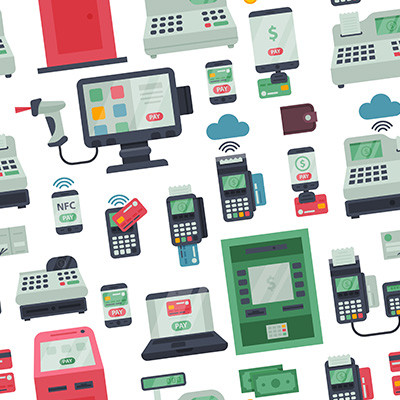In many ways, a business is only as capable as its sales team allows it to be… and nowadays, a sales team is only as capable as their tech allows them to be. Let’s take a few minutes to discuss how you can turn this to your advantage by providing your sales team with the technology that supports their goals.
IC Data Communications LLC Blog
Over the course of a year, a month, or even a single day, your business accumulates and utilizes a lot of data. You need systems in place to make good use of this data, otherwise your business is leaving efficiency on the table. Today we want to go over some proper uses for your data and how to make the most of this golden opportunity.
Businesses need to be cognizant of the role technology plays in today’s operations. Not only do you stand to lose ground on your competition if you fail to properly invest in your technology, it can have other negative effects on your business as well. This week, we outline eight things that can go wrong if you aren’t constantly looking to build a technologically savvy business.
You might see encryption as a major benefit to your cybersecurity strategy, but it’s often used in a way that might have you guessing whether you really understand it. Let’s take a closer look into what encryption does to your data, as well as why it is essential for any business to ensure maximum privacy and security.
When a business strikes a deal, there is usually some sort of paper trail or contract involved to hold both parties involved accountable. However, the traditional method of managing paper documents is both time-consuming and wasteful. With eSignature tools, businesses can change the way they handle signing documents for the better.
Professional sports has witnessed a significant shift in the way teams and organizations approach their strategies. Gone are the days when gut instinct and intuition were the sole driving forces behind decisions. Nowadays, sports are increasingly relying on analytics to gain a competitive edge. In this week’s blog, we explore the growing influence of analytics in sports and the ways in which data-driven insights have revolutionized the game.
Having an efficient and reliable point of sale (POS) system is essential for any retail or hospitality establishment. A robust POS system offers numerous benefits that can streamline the operations of the business and enhance customer and worker experiences. This week, we take a look at some of the main benefits of integrating a robust POS system in your business.
With the release of the 2023 edition of their annual Work Trend Index report, dedicated to exploring the topic of Will AI Fix Work?, Microsoft took a deep dive into the impact that artificial intelligence will have on the workplace in the future. This report ultimately resulted in three major conclusions, which we felt we should help amplify and contextualize.
In order for a business to stay competitive, they need to efficiently meet demand. Unfortunately, this is easier said than done and there are potential problems at every level that have to be accounted for one way or another. The best way to go about this is proactively. That means, risk mitigation. This month, we touch on how technology can be used to successfully reduce risk.
Nowadays, you can’t afford not to have some portion of your business’ budget set aside for cybersecurity. The question is, how much do you need, and what should you be spending it on first? Let’s take a few moments to dig a little deeper into this question and examine a few cybersecurity protections you should establish as your business’ baseline defenses.
It isn’t unusual for modern businesses to turn more and more often to “green” technologies, partially due to the reduced environmental impacts that come with their use, and partially due to the operational advantages that many of these technologies also bring. Let’s discuss some of the options that even smaller businesses can embrace that bring these kinds of mutual benefits.
A digital transformation can revolutionize the way a business operates. One of the technologies that make up for an across-the-board transformation is the use of digital storage in lieu of physical paper-based storage of data. Let’s go through a couple of considerations that go into going paperless, and how it can be a benefit for your organization.
Television has come a long way since its inception, and entertainment is more accessible today than it has ever been before. Technology has played a large part in the dissemination of this entertainment, so we thought we’d take a look at how the cloud has contributed to making television the cornerstone of leisure that it is today.
We spend a lot of time working with the technology that businesses rely on, including the laptop workstations used by just about everyone in many organizations today. As such, we wanted to share some of our insights so that you know what qualities you should look for when you’re ready to acquire some additional devices for your business.
Technology can be pretty expensive to buy and maintain, but it can get a whole lot more expensive if you aren’t cognizant of how your IT dollars are being spent. Long ago are the days when companies could get their technology for a song and it would work for years at a time. Today’s business technology has to build a more efficient workplace, as capital is harder to come by today than it has been for quite some time. Let’s take a look at four ways you could be wasting your technology budget and what you can do to ward against it.
If you are like many businesses, you use a lot of services from other companies to try and get all the business computing you need, without having to buy new servers and pay company IT administrators to look after them. This process is understandable, but are you really saving money by doing it? This month we will take a look at the myriad of services that businesses use and if it is, as advertised, saving them money.




















